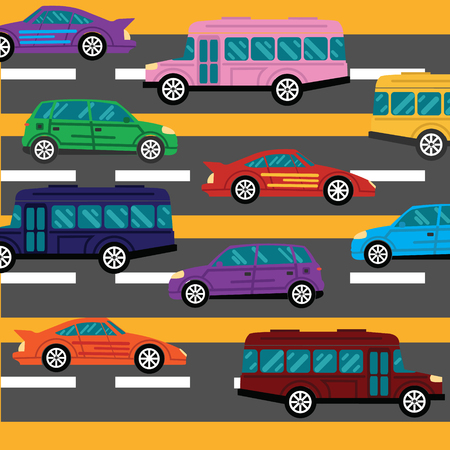1. Introduction: The Growing Popularity of Formula 1 in the U.S.
Formula 1 has traditionally been dominated by European audiences, but in recent years, its presence in the United States has grown significantly. More American fans are tuning in to races, attending events, and following teams and drivers. The sport, once considered niche in the U.S., is now capturing mainstream attention, making it one of the fastest-growing motorsports in the country.
Factors Driving Formula 1s Popularity in the U.S.
Several key factors have contributed to Formula 1s increasing fan base in the United States. These elements have helped transform the sport from a relatively obscure competition to a widely recognized and followed motorsport.
The Rise of Digital Streaming and Social Media
With the advent of digital platforms, more people have access to Formula 1 races and related content. Social media platforms such as Instagram, Twitter, and TikTok have played a significant role in spreading highlights, driver updates, and behind-the-scenes moments, making the sport more accessible and engaging.
Netflixs “Drive to Survive” Documentary Series
One of the biggest factors in Formula 1’s rise in the U.S. is the success of Netflix’s docuseries Drive to Survive. The series provides a behind-the-scenes look at the sport, dramatizing rivalries, race strategies, and team dynamics. This has attracted a new audience that may not have previously followed Formula 1.
More Races in the United States
As Formula 1 has aimed to expand its reach, more races have been added in the U.S. In addition to the historic Circuit of The Americas (COTA) in Austin, the Miami Grand Prix debuted in 2022, and the highly anticipated Las Vegas Grand Prix is set to bring another major race to American fans.
| Race | Location | First Year |
|---|---|---|
| United States Grand Prix | Austin, Texas | 2012 |
| Miami Grand Prix | Miami, Florida | 2022 |
| Las Vegas Grand Prix | Las Vegas, Nevada | 2023 |
Increased American Involvement
More American companies are investing in Formula 1, and U.S.-based teams like Haas F1 have contributed to the sports expansion. Additionally, American driver Logan Sargeants entry into F1 has sparked interest among U.S. fans, providing them with a homegrown talent to support.
Better Media Coverage
Television broadcasters such as ESPN have increased their coverage of Formula 1, offering live races and in-depth analysis. The accessibility of F1 content on major sports networks has contributed to a growing fanbase in the region.
Looking Ahead
With all of these factors contributing to Formula 1’s increasing presence in the United States, the sport is set to continue its growth. More races, greater media exposure, and new fan engagement opportunities are making F1 a major motorsport attraction in America.
2. The Impact of Drive to Survive and Media Coverage
How the Netflix Series ‘Drive to Survive’ Changed F1’s Popularity
One of the biggest reasons for Formula 1’s rapid rise in popularity in the United States is the Netflix documentary series Drive to Survive. Since its debut in 2019, the show has provided an inside look at the drama, rivalries, and personalities that make F1 so exciting. Unlike just watching races on TV, Drive to Survive gives fans an emotional connection to drivers and teams, making the sport more relatable to a wider audience.
Before the series, many American sports fans viewed F1 as a complicated and distant European-dominated sport. However, the storytelling approach of the series has helped change this perception. It showcases both the intense on-track action and behind-the-scenes challenges, making it easier for new fans to engage with the sport.
Growth in U.S. Viewership and Fan Engagement
Since the release of Drive to Survive, F1 has seen remarkable growth in American viewership. More people are tuning in to watch live races, and social media engagement around the sport has surged. The table below highlights how F1 viewership in the U.S. has grown in recent years:
| Year | Average U.S. Race Viewership | Streaming and Social Media Growth |
|---|---|---|
| 2018 (Before DtS) | 554,000 viewers | Moderate engagement |
| 2021 | 934,000 viewers | Significant increase |
| 2023 | 1.3 million viewers | Record-breaking fan interaction |
Expanded Media Coverage and Marketing Efforts
Alongside the success of Drive to Survive, F1 has also benefited from greater media coverage in the U.S. Networks like ESPN now dedicate more time to F1 races and analysis, making it easier for American fans to follow the sport. Additionally, F1’s social media and digital presence have expanded, creating more ways for fans to stay engaged between races.
Major sports networks, podcasts, and even celebrity endorsements have helped bring F1 further into mainstream American sports culture. With the increased media coverage, new fans no longer need to go out of their way to learn about the sport—it is now readily accessible across multiple platforms.

3. Expansion of Races in the U.S.
Formula 1 has taken major steps to expand its presence in the United States by adding more Grand Prix events. The U.S. has historically had a complicated relationship with F1, but in recent years, interest in the sport has surged. To meet growing demand, new races have joined the existing U.S. Grand Prix in Austin, bringing high-profile F1 events to more cities.
New U.S. Grand Prix Races
The introduction of new races in Miami and Las Vegas marks a significant shift in F1’s strategy. These locations were chosen strategically to attract a wider American audience and maximize exposure for the sport.
| City | First Held | Track Type | Significance |
|---|---|---|---|
| Austin (Circuit of the Americas) | 2012 | Permanent Circuit | Established F1s consistent presence in the U.S. |
| Miami (Miami International Autodrome) | 2022 | Temporary Street Circuit | Brought F1 to South Florida, enhancing its appeal to new fans. |
| Las Vegas (Las Vegas Strip Circuit) | 2023 | Street Circuit | Designed to maximize entertainment and tourism appeal. |
Why These Races Matter
Each of these cities plays a unique role in Formula 1’s expansion. Austin has been a staple in the calendar for years, proving that the U.S. has an appetite for F1. Miami’s introduction aimed to blend racing with a vibrant cultural and entertainment scene, while Las Vegas was envisioned as a marquee event with its racing spectacle in the heart of the iconic Strip.
Reaching a Broader Audience
By hosting races in different regions, F1 ensures that more American fans get to experience the sport in person. The East Coast (Miami), South (Austin), and West Coast (Las Vegas) now all have races, making F1 more accessible than ever for U.S. audiences.
Increased Global Exposure
Las Vegas, known for its entertainment industry, brings a new level of appeal to Formula 1. With the race taking place at night under the city lights, it provides a visually stunning experience that draws in both die-hard fans and casual viewers.
The Future of F1 in the U.S.
The addition of these races signals that Formula 1 views the United States as a key market. As fan engagement grows, more cities may eventually join the calendar, further solidifying F1’s place in American motorsports culture.
4. Increased Sponsorships and Brand Partnerships
As Formula 1 continues to expand its footprint in the United States, major U.S. companies and brands are recognizing the opportunity to associate with one of the fastest-growing sports in the country. Sponsorships and brand partnerships have played a crucial role in bringing more business opportunities to the sport while also increasing its visibility among American audiences.
Big Brands Entering the F1 Scene
In recent years, several well-known American companies have stepped in as official sponsors or partners of Formula 1 teams and events. These companies see the sport as a powerful marketing platform to engage with a massive global audience, especially younger demographics who are drawn to cutting-edge technology and high-performance competition.
Examples of U.S. Brands in Formula 1
| Brand | Industry | Role in F1 |
|---|---|---|
| Oracle | Technology | Title sponsor of Red Bull Racing |
| Ford | Automotive | Power unit supplier for Red Bull starting in 2026 |
| MoneyGram | Financial Services | Title sponsor of Haas F1 Team |
| Amazon Web Services (AWS) | Cloud Computing | Technical partner providing race analytics |
By partnering with these major companies, Formula 1 benefits from increased financial investment, cutting-edge technology, and enhanced fan engagement. Brands, in return, gain exposure to millions of passionate fans worldwide, boosting their global and U.S.-based presence.
The Growth of U.S.-Based F1 Events
The rise of F1 in the U.S. has also led to an increase in title sponsorship for American races. Events like the Miami Grand Prix and the Las Vegas Grand Prix have secured major sponsors, ensuring that these races not only draw large crowds but also maintain a high level of entertainment and spectacle.
Impact of Sponsorship Growth
- More investment into F1 teams, leading to better performance and innovation.
- Increased marketing campaigns in the U.S., helping attract new fans.
- Enhanced race experiences with sponsor-backed fan zones, concerts, and digital engagement.
As American brands continue to recognize the potential of Formula 1, these sponsorships and partnerships will play a key role in shaping the future of the sport’s presence in the U.S.
5. Growing American Driver Presence and Team Influence
Formula 1 has traditionally been dominated by European drivers and teams, but things are changing as American drivers and U.S.-based teams gain more influence in the sport. With the rise of young American talent and greater involvement from investors, Formula 1 is expanding its footprint in the United States like never before.
The Rise of American Drivers
For years, American drivers in Formula 1 were rare, but that trend is shifting. The success of American motorsports in IndyCar and NASCAR has bred talent capable of competing at the highest level. Recently, U.S. drivers have been getting more opportunities to showcase their skills in Formula 1.
Notable American Drivers in Formula 1
| Driver | Year(s) Active | Team(s) |
|---|---|---|
| Logan Sargeant | 2023–Present | Williams |
| Michael Andretti | 1993 | McLaren |
| Scott Speed | 2006–2007 | Toro Rosso |
Logan Sargeants entry into Formula 1 with Williams marked a significant moment, as he became the first full-time American F1 driver in over a decade. With growing fan support in the U.S., more teams may look to American drivers in the future.
Increasing U.S. Team and Investor Involvement
Beyond drivers, American companies and teams are playing a bigger role in Formula 1. Haas F1 Team is currently the only U.S.-based team, but more American businesses and investors have shown interest in the sport.
Key U.S. Teams and Investments in Formula 1
| Entity | Type | Involvement |
|---|---|---|
| Haas F1 Team | Constructor | Competing since 2016 |
| Andretti Global | Potential Constructor | Applying for F1 entry |
| Liberty Media | Investor | Owner of Formula 1 |
Haas F1 Teams presence has provided American fans a team to support on the grid, while Liberty Media’s ownership of Formula 1 has played a major role in expanding the sport’s popularity in the U.S. Meanwhile, Andretti Global continues to make efforts to join the grid, which could further boost American influence in F1.
The Future of American Influence in Formula 1
With growing interest from American investors and the potential for more U.S.-based teams, the sport is set to see more American influence in the coming years. As Formula 1 continues to expand in the United States, the combination of talented drivers, passionate fans, and increasing financial backing will ensure that America plays a bigger role in the sport going forward.
6. The Future of Formula 1 in America
Formula 1’s growth in the United States has been nothing short of impressive, but what does the future hold? With its increasing popularity, F1 is likely to become a bigger part of American motorsports culture. Let’s explore some potential long-term impacts and developments.
Long-Term Impact of F1’s Expansion in the U.S.
As Formula 1 continues to invest in expanding its reach across the U.S., several key areas are likely to be influenced:
| Category | Predicted Impact |
|---|---|
| TV Ratings & Streaming | Growth in viewership, especially among younger audiences discovering F1 through streaming platforms. |
| Grand Prix Events | More races in new U.S. locations, following the success of Austin, Miami, and Las Vegas. |
| American Drivers in F1 | Increased opportunities for young American talents to enter the sport and compete at the highest level. |
| Team Involvement | More U.S.-based sponsorships and possibly a stronger American F1 team presence. |
| Fan Engagement | More interactive fan experiences, such as F1-themed events, exhibitions, and expanded merchandise availability. |
Potential Future Developments
Looking ahead, several factors could further shape F1’s future in the U.S.:
- New Race Locations: Cities like Chicago or New York could be considered for additional Grand Prix events.
- Increased Media Coverage: More in-depth analysis, behind-the-scenes content, and exclusive interviews tailored for the American audience.
- Greater Youth Involvement: Development of grassroots programs to encourage young American drivers to pursue careers in open-wheel racing.
- Technology Integration: Enhanced digital experiences, such as virtual reality race simulations and AI-powered fan insights.
What’s Next?
With F1 continuing to capture American interest, the next decade could see the sport becoming deeply integrated into the U.S. sports culture. Whether it’s through new circuits, local talent, or innovative ways to engage fans, the expansion is far from over.


